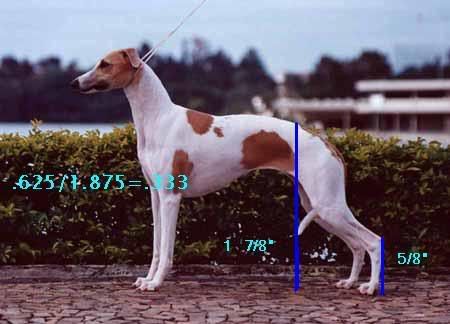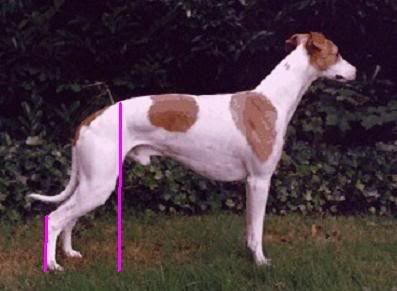- Messages
- 4,751
- Reaction score
- 2
- Points
- 38
Last edited by a moderator:
Follow along with the video below to see how to install our site as a web app on your home screen.
Note: This feature may not be available in some browsers.
Ok - this is where I come right out and say you're wrong Lida.Seraphina said:However hock as a such is actually the bit from stifle (the knee) to the hock joint (the heel).
Yes it the joint equivalent to our heel, but if you go to butcher and ask for hock you get the bit from the knee down, not the trotter, which is the bit from the hock joint down.aslan said:Ok - this is where I come right out and say you're wrong Lida.Seraphina said:However hock as a such is actually the bit from stifle (the knee) to the hock joint (the heel).
The area you talk about is marked in green on the pic. This is definitely NOT the hock. This is the second thigh.
The hock joint is at the yellow dot and the hock itself (or the rear pastern) is marked in pink.
Seraphina said:Yes it the joint equivalent to our heel, but if you go to butcher and ask for hock you get the bit from the knee down, not the trotter, which is the bit from the hock joint down.aslan said:Ok - this is where I come right out and say you're wrong Lida.Seraphina said:However hock as a such is actually the bit from stifle (the knee) to the hock joint (the heel).
The area you talk about is marked in green on the pic. This is definitely NOT the hock. This is the second thigh.
The hock joint is at the yellow dot and the hock itself (or the rear pastern) is marked in pink.
But that is not he point, how can you have "hock joint well let down" ? Why not say metatarsus relatively short
:bparnew said:No... this is the shank Lida not the hock. As Lana pointed out the hock is the joint. If you wish to talk in butcher terms you are on the wrong forum as we don't eat our whippets (w00t) ..
Please doLana has a good grounding in horses as I do and some of the terms you refer to are wrong. Will explain later.....
This is exactly as I have always understood the term in the world of horses. Although a novice regarding the anatomy of dogs I did expect the term 'hocks well let down' to mean the same regarding dogs i.e. that the hock joint or point of hock is low to the ground ie the length of the metatarsus relatively short compared to the total length of the leg.aslan said:Hocks well let down is a horsey term - that's how it became used in our standards. It is asking for something in relation to something else. It is asking for shorter bones in the hock compared with longer tibia and fibula. It actually means it wants the HOCK JOINT not far away from the ground, which in turn creates short hocks, and the whole hock is "well let down" (as compared to the rest of the leg) - if they are not "well let down" they are "long hocked" or "high on the hock".
Right-e-o! Spoke to my butcher bosses this avo and this is what they told me and showed me as they were boning pigs at the time.Seraphina said:if you go to butcher and ask for hock you get the bit from the knee down, not the trotter, which is the bit from the hock joint down.
Correct!'well let down hocks' was probably used originally because most people in those day were familar with the term from the world of horses and would interpret it in the same way.Pauline
This bitch's angulation in back is too extreme even for me (I like dogs with plenty of angles).patsy said:For me the dark brindle bitch is far too long in her second thigh, but her hocks are well let down, so that is my theorie out of the window that with a correct second thigh the hocks are usually well let down. When you breed to exagerate the back end you will find that the second thigh becomes long and weak.


The pigs in Australia must be made different to the pigs we over here,.We know what we are getting with a ham hock............. a good pot of soup!!!!!!!!!aslan said:Right-e-o! Spoke to my butcher bosses this avo and this is what they told me and showed me as they were boning pigs at the time.Seraphina said:if you go to butcher and ask for hock you get the bit from the knee down, not the trotter, which is the bit from the hock joint down.
When you ask for "hock" on a pig you actually get the forearm (from the forequarter). The actual hock joint on the hindquarter forms part of the "leg of ham" so it doesn't get sold separately.
Correct!'well let down hocks' was probably used originally because most people in those day were familar with the term from the world of horses and would interpret it in the same way.Pauline
I think quite a bit of that hock is buried in vegetation! So maybe not as neat as it appears at first glance.patsy said:For me the dark brindle bitch is far too long in her second thigh, but her hocks are well let down, so that is my theorie out of the window that with a correct second thigh the hocks are usually well let down. When you breed to exagerate the back end you will find that the second thigh becomes long and weak.
:lol:dragonfly said:I think quite a bit of that hock is buried in vegetation! So maybe not as neat as it appears at first glance.

Join our vibrant online community dedicated to all things canine. Whether you're a seasoned owner or new to the world of dogs, our forum is your go-to hub for sharing stories, seeking advice, and connecting with fellow dog lovers. From training tips to health concerns, we cover it all. Register now and unleash the full potential of your dog-loving experience!
Login or Register